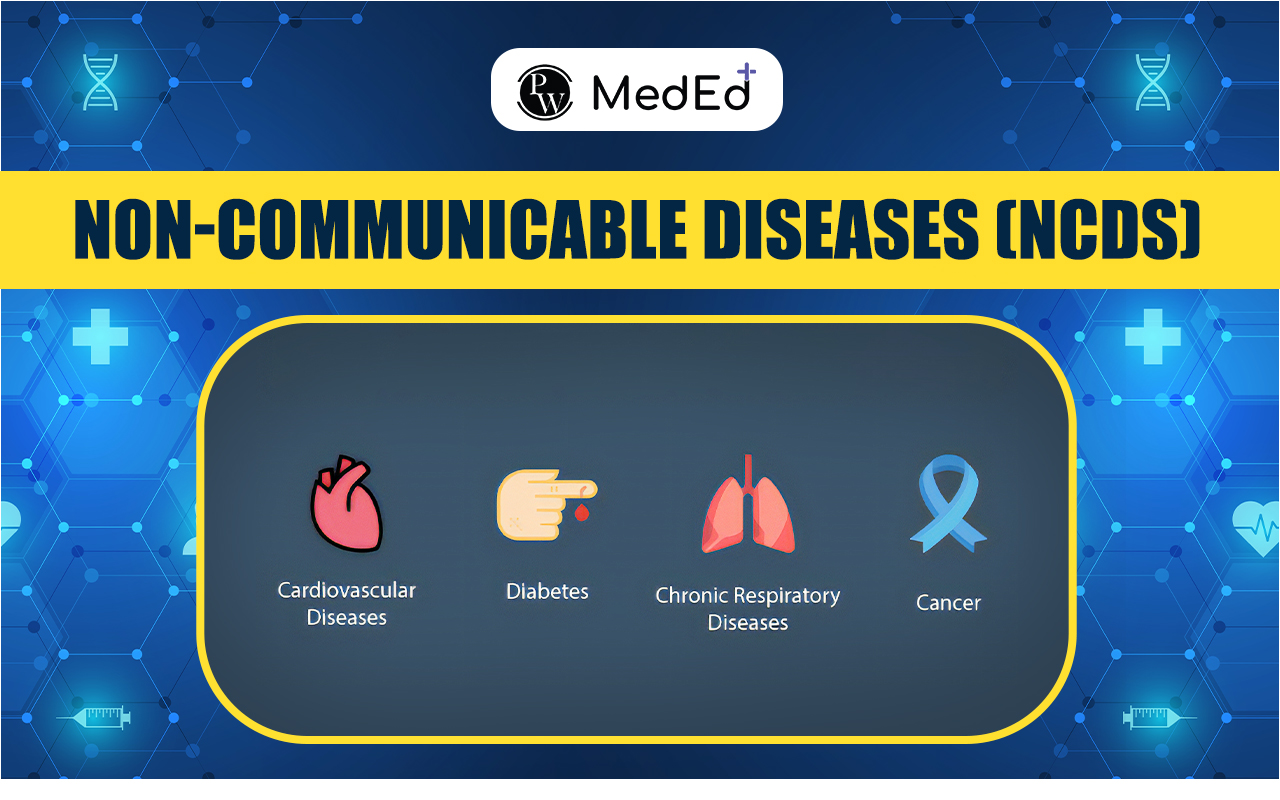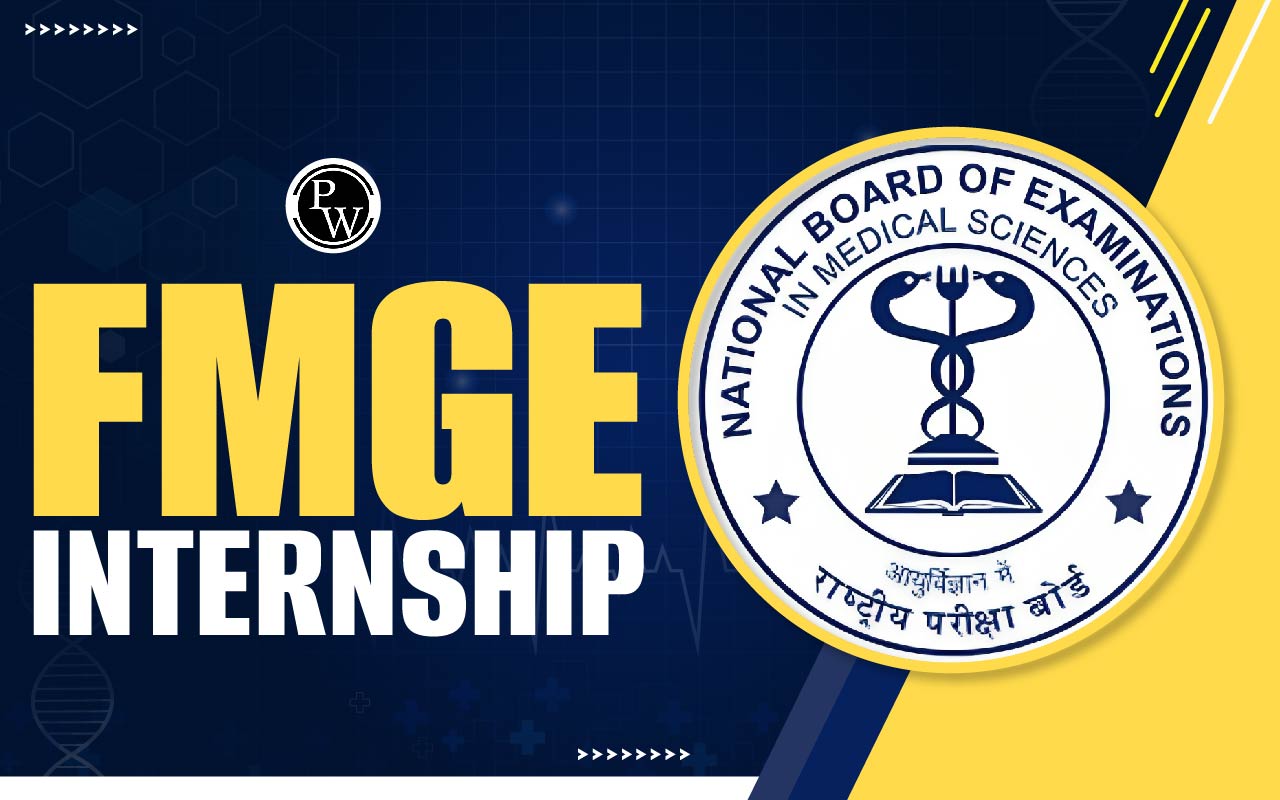

Noncommunicable diseases, also known as chronic diseases, are health problems that can't be passed from one person to another and usually last a long time. These diseases affect people of all ages, religions, and countries.
While they are often thought to be diseases of older people, around 15 million deaths from non-communicable diseases happen to people aged 30 to 69 each year. Most of the deaths occur in low- and middle-income countries and in communities where people don't have easy access to healthcare to prevent or treat these diseases. Non-Communicable Diseases Overview Non-communicable diseases (NCDs) are not infectious and don't spread like communicable diseases. The further details are listed below:- Around 71% of global deaths are caused by NCDs, mainly affecting middle and low-income countries.
- The four major NCDs are cardiovascular, cancer, respiratory, and diabetes.
- These diseases can result from lifestyle and genetic factors, often called lifestyle diseases.
- Risk factors for NCDs include poor diet, lack of exercise, insufficient sleep, smoking, alcohol consumption, and stress .
Types of Non-Communicable Diseases
The major Non-communicable diseases include heart disease, cancer, lung disease, and diabetes. The details of these diseases are shown in the table below:| Types of Non Communicable Disease | ||
| Non-Communicable Disease Types | Details | Examples |
| Cardiovascular Disease | An unhealthy diet and lack of exercise raise blood pressure, blood sugar, and cholesterol, increasing the risk of cardiovascular disease, the primary cause of non-communicable deaths. |
|
| Cancer | Cancer is a disease that affects people regardless of age or gender. Healthy lifestyle choices such as avoiding tobacco and limiting alcohol can prevent 30 to 50 percent of cases. |
|
| Chronic Respiratory Disease | Chronic respiratory diseases affect the airways and lungs, often due to smoking or air pollution. Medical treatment can help manage conditions like asthma and chronic obstructive pulmonary disease. |
|
| Diabetes | Diabetes results from inadequate insulin production, leading to high blood sugar levels. Its effects include heart disease, vision loss, kidney damage, and harm to other organs if blood sugar levels remain uncontrolled over time. |
|
Non-Communicable Disease Symptoms
Noncommunicable diseases (NCDs) sometimes have no apparent symptoms, and the disease is only discovered after a sudden death. Each NCD has its symptoms, contributing to the complexity of diagnosis and treatment. Some of the symptoms include the following:- Cardiovascular diseases include symptoms like irregular heartbeat, sudden chest pain, disturbances in cardiac rhythm, and fever.
- Cancer symptoms often include weakness, hair loss, fatigue, and various other signs depending on the type and location of the cancer.
- Alzheimer's disease primarily shows symptoms of memory loss, affecting individuals over the age of 60.
Causes of Non-Communicable Diseases
Non-communicable diseases, such as cancer, heart issues, and diabetes, can arise from various factors like smoking, alcohol consumption, and poor diet. Additionally, these diseases can run in families, passed down from generation to generation. Treating such hereditary conditions often requires gene therapy treatments. So, changing lifestyles helps prevent and manage these diseases, which is essential.Non-Communicable Diseases Risk Factors
Various factors like unhealthy diet, lack of physical activity, etc, increase the risk of non-communicable diseases. These are described in detail below: Unhealthy Diet: Consuming excessive salt, sugar, and fats increases the risk of non-communicable diseases. Physical Inactivity: Avoiding exercise, significantly if overweight or obese, increases the chances of developing these diseases. Smoking and Alcohol: These habits increase the risk of non-communicable diseases, and quitting is essential for better health. Some risk factors, like age, gender, race, and family history, are beyond a person's control.Non-Communicable Diseases Treatment
Avoiding non-communicable diseases involves a healthy lifestyle, including balanced nutrition and regular exercise. The treatment process varies according to the disease diagnosed. The details are mentioned below: Diagnosis Process: When symptoms of non-communicable diseases arise, diagnosis involves various tests and screenings to determine the specific condition. Irregular heartbeat and weakness may include tests like an electrocardiogram (ECG) and a 2D echocardiogram to diagnose heart-related issues such as strokes or heart attacks. Treatment: Treatment methods for non-communicable diseases vary based on the diagnosed condition and its severity. For cancer, treatments like chemotherapy, radiation therapy, or medication are recommended. Treatment plans are often planned according to the individual's health status, medical history, and the stage of the disease. To cure non-communicable diseases, we need to diagnose them early and treat them. Since they last long, we must also give proper treatment and medication. Making primary health care better can save lives from these diseases. To get better understanding of non-communicable disease, and other related topics from top medical professionals, download the PW MedEd app .Non-Communicable Diseases FAQs
Is TB a non-communicable disease?
TB is a non-communicable disease.
What are the three deadliest NCDs?
Stroke, Cancer, and Heart disease are the three deadliest diseases.
Is Jaundice communicable?
No, Jaundice is not a contagious disease.
What percentage of disease is NCD?
NCDs contribute to around 38 million of all deaths globally and about 5.87 million of all deaths in India.
Talk to a counsellorHave doubts? Our support team will be happy to assist you!

Free Learning Resources
PW Books
Notes (Class 10-12)
PW Study Materials
Notes (Class 6-9)
Ncert Solutions
Govt Exams
Class 6th to 12th Online Courses
Govt Job Exams Courses
UPSC Coaching
Defence Exam Coaching
Gate Exam Coaching
Other Exams
Know about Physics Wallah
Physics Wallah is an Indian edtech platform that provides accessible & comprehensive learning experiences to students from Class 6th to postgraduate level. We also provide extensive NCERT solutions, sample paper, NEET, JEE Mains, BITSAT previous year papers & more such resources to students. Physics Wallah also caters to over 3.5 million registered students and over 78 lakh+ Youtube subscribers with 4.8 rating on its app.
We Stand Out because
We provide students with intensive courses with India’s qualified & experienced faculties & mentors. PW strives to make the learning experience comprehensive and accessible for students of all sections of society. We believe in empowering every single student who couldn't dream of a good career in engineering and medical field earlier.
Our Key Focus Areas
Physics Wallah's main focus is to make the learning experience as economical as possible for all students. With our affordable courses like Lakshya, Udaan and Arjuna and many others, we have been able to provide a platform for lakhs of aspirants. From providing Chemistry, Maths, Physics formula to giving e-books of eminent authors like RD Sharma, RS Aggarwal and Lakhmir Singh, PW focuses on every single student's need for preparation.
What Makes Us Different
Physics Wallah strives to develop a comprehensive pedagogical structure for students, where they get a state-of-the-art learning experience with study material and resources. Apart from catering students preparing for JEE Mains and NEET, PW also provides study material for each state board like Uttar Pradesh, Bihar, and others
Copyright © 2025 Physicswallah Limited All rights reserved.











